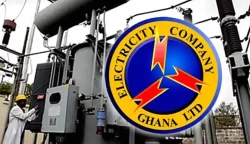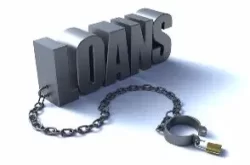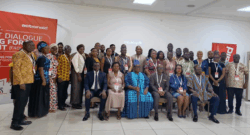We know that the future will be powered by metals, but it remains to be seen if those metals will be fenced in by iron curtains. After all, most critical minerals come from only a handful of countries: China controls nearly all heavy rare-earth materials (including 91% of magnesium and 76% of silicon metal), the Democratic Republic of Congo (DRC) accounts for over 60% of the global cobalt market, and South Africa controls 71% of the world’s platinum supply.
These metals and critical minerals are crucial for the green transition, because they are used in everything from electric vehicles to wind turbines. The International Energy Agency estimates that the global critical minerals market already doubled over the past five years, and will (at least) double again by 2040, owing to rising demand for EVs, battery storage, low-emissions power generation, and electricity networks.
The DRC, Chile, Peru, China, Russia, South Africa, and even Australia all stand to benefit from surging demand for critical raw materials. With every other country determined to secure its own supply, mineral-rich ones could follow the OPEC model and try to form an Organization of Metal-Exporting Countries (OMEC).
There is also talk of extending the informal BRICS (Brazil, Russia, India, China, and South Africa) group to include other relevant emerging markets, notably commodity producers. In this scenario, a metals cartel could span the Global South, uniting some countries in Southeast Asia (Vietnam, Malaysia, Indonesia, Laos, and Sri Lanka), some in Africa (Nigeria, Kenya, and Angola), and some in Latin America (Bolivia and Argentina).
If mineral-rich countries were to join forces, they could shake global markets in three ways, starting with price manipulation. Like OPEC, an OMEC could use production or export quotas to drive up prices, which in turn would make clean-energy technologies more expensive, potentially slowing the green transition. Moreover, a new cartel could pursue strategic supply disruptions to gain geopolitical leverage over countries that are highly reliant on these metals. And it could enter exclusive trade agreements with strategically chosen partners, further concentrating its market power and tilting global supply as it sees fit.
All these risks imply that countries deemed “unfriendly” by the cartel could have trouble securing the resources they need. We got a preview of these dynamics in 2010, when China banned some rare-earth exports to Japan as part of a territorial dispute. Prices exploded, and it took years for the issue to be resolved at the World Trade Organization. By that time, rare-earth-based value chains had already migrated to China, and the subsequent drop in prices further cemented its supremacy in production and processing.
Today, Chinese export embargos would likely be far more effective, because the concentration of value chains means that the government can easily enforce its orders (and not only in the rare-earth sector). For China’s trade partners, “de-risking” will require a lot of time and government support, because alternative sources tend to be costlier.
Complicating matters further, many governments have been introducing new export restrictions on critical raw materials, especially aluminum, cobalt, and helium. Such measures have increased more than fivefold over the past decade, especially in China, India, Pakistan, Argentina, and Russia, but also in the United States. This development poses a particular threat to import-dependent countries such as Japan, South Korea, and EU members.
The European Union, for example, is completely dependent on imported antimony and borate – which are essential for large-scale energy storage and wind turbines, respectively – and more than 80% dependent on imports of six other raw materials. At the refining stage, it is 100% import dependent for six key materials, and 80% dependent for another seven. It also relies primarily on a single supplier for certain minerals, such as China for magnesium, germanium, and rare-earth elements, and Turkey for borate. The EU thus could face critical shortages if supply chains are disrupted for economic or geopolitical reasons.
Yet another risk lies in the concentration of leading supply-chain firms. Even though cobalt is found mainly in the DRC, control of the supply of cobalt products has shifted from the DRC government and Russian companies to Chinese and South African firms. Similarly, only one EU-based company ranks among the top ten producers of copper, and six companies from four countries (the US, the United Kingdom, Switzerland, and Canada) account for about one-third of global copper output.
Clearly, there is a growing need to diversify supply relationships, and to make more concrete investments abroad to prevent further concentration over the long term. Among the more immediate solutions, the quickest fix is to increase the plurality of shareholders in dominant companies, whether public or private, by supporting conducive trade and foreign investment policies. The EU’s Global Gateway is a valuable platform and can be further harnessed to partnerships with resource-rich countries to enhance supply-chain resilience.
For countries heavily dependent on imported critical minerals, playing the long game will require stepping up domestic production and recycling capabilities, promoting sustainable extraction practices, and investing in the development of recycling technologies. New technological developments will play a key role by reducing material intensity and promoting substitution. Sodium-ion batteries, for example, could ease the pressure on lithium supplies. Given what is at stake in the global green transition, however, the top priority must be to maintain free, fair, and open trade. A new cartel would be inimical to that goal.
Ludovic Subran is Chief Economist at Allianz.
Copyright: Project Syndicate, 2023.
www.project-syndicate.org










